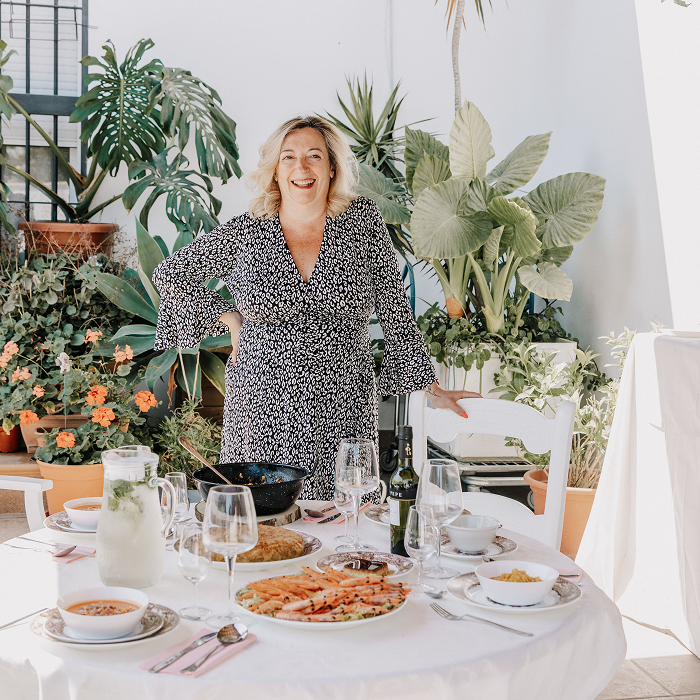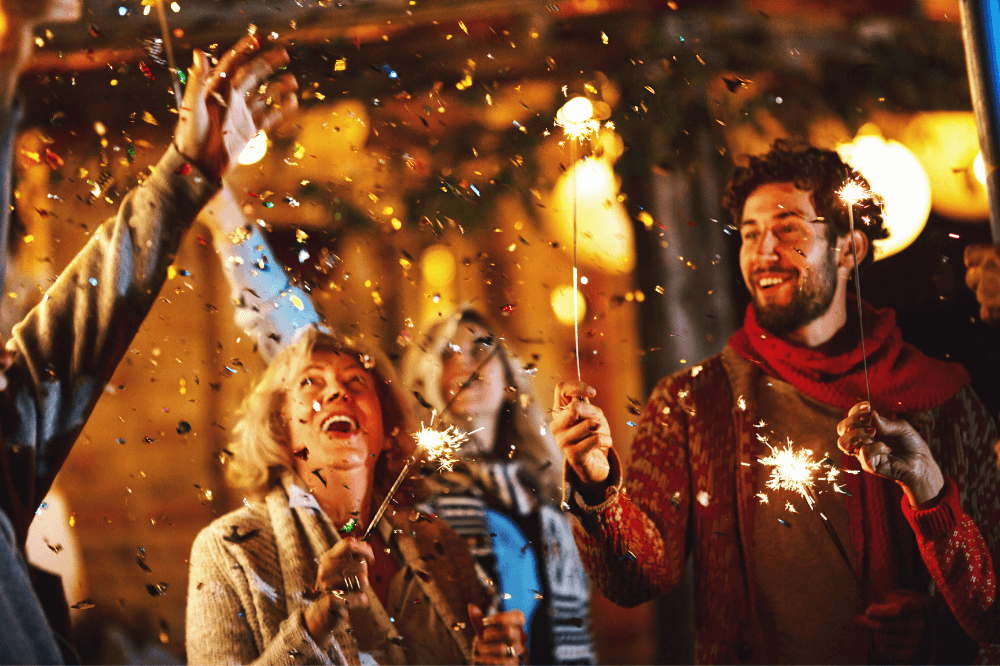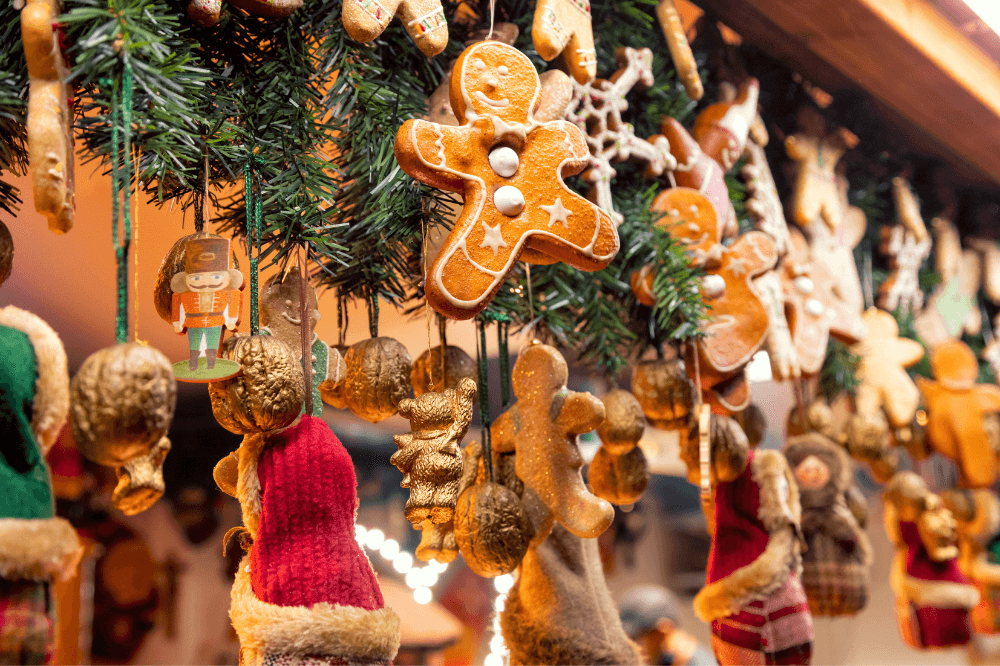Every year, thousands of people travel to this Andalusian village to witness one of Spain’s most important traditions.
But if you’ve never been, it’s easy to feel a bit lost among the crowds, heat, sand, and celebrations.
In this article, we share the best tips for visiting El Rocío for the first time: from when to go and what to bring, to how to get around and what moments you can’t miss.
Keep reading and get ready to enjoy a truly unique experience without any setbacks.
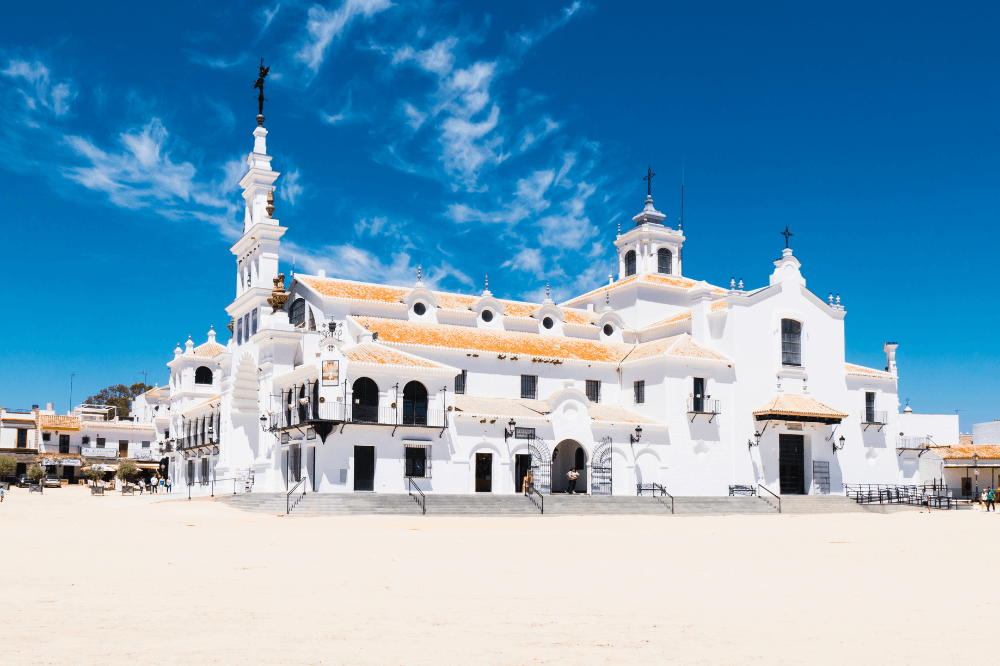
What is El Rocío?
El Rocío is one of the most important religious celebrations in southern Spain.
It takes place in a small village of the same name, located in the municipality of Almonte (Huelva province), during the weekend of Pentecost, usually between May and June.
Every year, thousands of people make their way there to honor the Virgin of El Rocío.
Many walk for days from different parts of Andalusia, following traditional pilgrimage routes known as “el camino”.
However, it’s also possible and more advisable if you’re coming from abroad and short on time to visit directly by car.
A Bit of History
The origins of El Rocío date back to the 13th century when, according to legend, a hunter found an image of the Virgin in a place called Las Rocinas, now part of Doñana National Park.
That discovery led to the construction of a small chapel and the beginning of the Virgin’s veneration, which has grown steadily over the centuries.
By the 17th century, religious brotherhoods (hermandades) were already organizing pilgrimages from different parts of Andalusia.
The first officially recognized one was from Almonte, the town closest to the village. Since then, the devotion and the pilgrimage have only grown.
When Does It Take Place?
The pilgrimage of El Rocío is celebrated each year on the weekend of Pentecost Sunday, a Christian feast that doesn’t fall on a fixed date.
Pentecost is 50 days after Easter Sunday, so El Rocío usually takes place between mid-May and mid-June.
Tips for Visiting El Rocío: What to Know Before You Go
If you’re planning to attend for the first time, there are some things you’ll want to know to make the most of it.
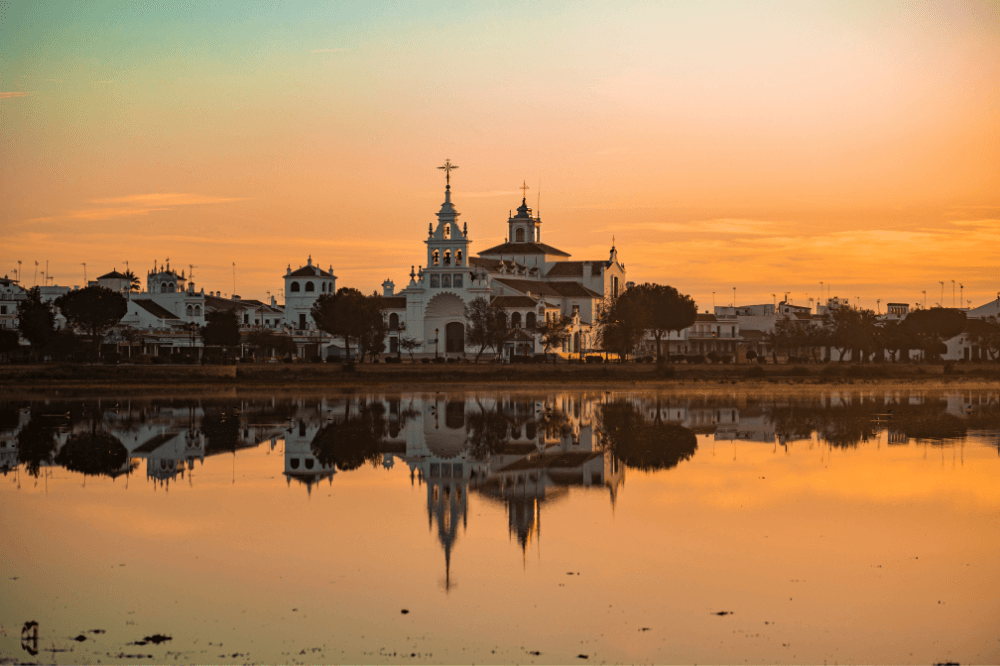
Here are 10 practical tips to make your visit more comfortable, safe, and memorable.
1. Check the date in advance
El Rocío doesn’t have a fixed date, it depends on the Christian liturgical calendar.
Since Pentecost is 50 days after Easter, the pilgrimage falls between mid-May and mid-June.
So if you’re planning a trip, the first thing to do is check the exact date of Pentecost for that year.
Knowing this early helps you book transportation, accommodation, and activities, everything fills up quickly.
It also helps you decide if you want to be there just for the main weekend or also during the days leading up to it, when the atmosphere is already lively.
2. Book accommodation months in advance
During El Rocío, the village is completely packed.
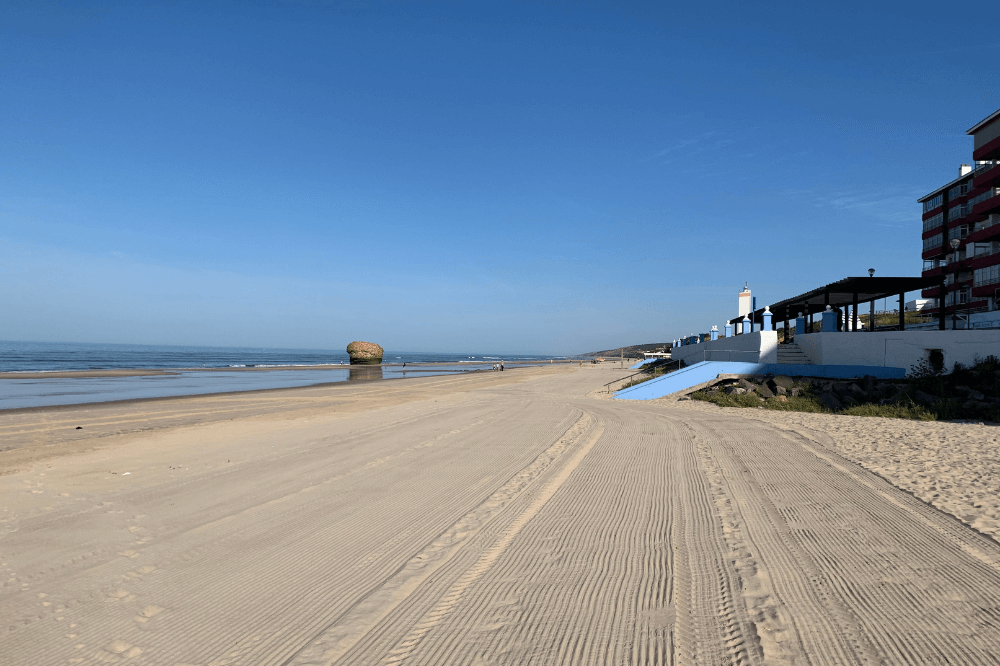
Most houses belong to religious brotherhoods or families who only use them during the pilgrimage, so finding a place to stay without early booking is very difficult.
If you’re sure you want to go, start looking for accommodation between January and March. After that, options are very limited.
Beyond those dates, the options are greatly reduced.
There are some rural houses or rooms for rent in the village itself, but they tend to fill up quickly.
Nearby places where you might find lodging include:
- Matalascañas (15 minutes by car)
- Almonte
- El Rocío Rural
- Bollullos Par del Condado
- Huelva city (about 50 minutes away)
There are also caravan and camping options, but these also book out early.
3. Prepare for heat and dust
El Rocío takes place in late spring, when it’s already quite hot in Andalusia.
Daytime temperatures can easily surpass 30°C (86°F), and the village has no shade or paved streets: everything is sand.
This means walking around can be exhausting if you’re not prepared.
Wear light, breathable clothes (cotton or linen), preferably in light colors.
A hat or cap is essential, as are sunglasses and sunscreen.
Forget delicate shoes or sandals, opt for comfortable sneakers or lightweight boots that can handle long walks and dust.
Many people wear scarves or bandanas to protect their nose and mouth, especially on windy days.
Also, carry a small backpack with water, snacks, and wet wipes. Trust us, you’ll be glad you did.
4. Arrive early by car or use organized transport
During the pilgrimage, getting into the village can be tricky. Many streets are closed, traffic is heavy, and access is controlled, especially on the main weekend.
If you’re driving, leave early and know where to park.
Usually, there are parking lots outside the village, and from there you’ll need to walk—so wear comfortable shoes and pack light.
A great alternative is to take organized transport from nearby towns like Almonte or Matalascañas.
Shuttle buses are usually available and drop you off near the village.
You can also book guided tours with transport and assistance, included a hassle-free way to enjoy the experience.
5. Respect the traditions
Even if you’re visiting as a tourist, it’s important to engage respectfully.
You don’t have to be religious to enjoy El Rocío, but there are moments when courtesy matters: don’t interrupt prayers or songs, and don’t walk in front of the Virgin during processions.
At certain times, like the Rosario prayer or the Virgin’s exit in the early hours of Monday, the atmosphere is very solemn.
Silence and respect are appreciated, even from spectators.
If someone invites you to join a meal or enter a brotherhood house (chozo), feel welcome, but be polite and thankful.
Sharing is part of the Rocío spirit but always with mutual respect.
6. Don’t miss the Virgin’s exit
The Virgin’s exit is the most emotional and anticipated moment of the entire pilgrimage.
It happens between Sunday night and Monday morning but there’s no exact time.
It depends on when the people of Almonte “jump the gate” to carry her out of the hermitage. This can be anytime from 1:00 am onward.
If you want to experience it, arrive early, bring water, something warm (nights can get chilly), and above all, patience.
The atmosphere is intense, and there may be pushing and find a safe spot and enjoy the moment calmly.
7. Learn about the hermandades
The hermandades are religious brotherhoods that make the pilgrimage to El Rocío from different parts of Spain, mostly Andalusia.
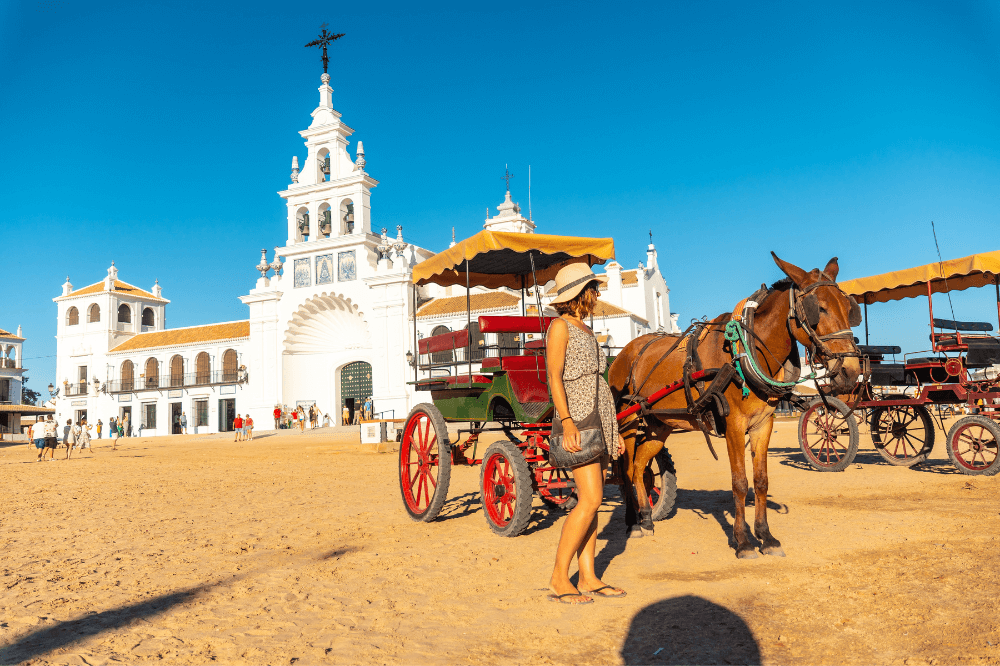
Each one has its own route, traditions, and arrival time.
In the days leading up to the main weekend, these groups arrive one by one to present themselves to the Virgin.
A key moment called the presentation of the brotherhoods, this happens on Saturday and lasts all day.
Watching them arrive is a spectacle: traditional dress, decorated carts, singing, and the group’s unique way of organizing.
Consulting the official program or asking at the tourist office will help you find out which brotherhoods arrive, at what time, and which streets they pass through.
This way, you’ll be able to navigate more easily and not miss the most significant moments.
8. Bring water and some food
During the peak days, the village is very crowded, and finding food or drinks without long waits can be tough.
There are food stalls and temporary bars, but they’re often overwhelmed during peak hours.
It’s smart to bring a reusable water bottle and simple snacks like sandwiches, fruit, or nuts to keep your energy up. It will help you avoid lines and stay energized, especially if you’re going to spend many hours walking or waiting at the chapel.
Also pack some wipes, napkins, and a small bag for trash.
There aren’t many trash cans, and it’s important to keep the area clean, especially in natural areas like the Doñana area.
9. Avoid large suitcases
The village streets are sandy, not paved, so moving around with big or heavy suitcases is a nightmare. There are also huge crowds, which makes it even harder to move with bulky luggage.
If you’re staying in the village, pack light and bring a backpack or soft travel bag.
Bring only the essentials:
- Comfortable clothes
- Sturdy footwear
- Sunscreen
- Something warm for nighttime
- Basic toiletries
If you’re staying in a nearby town and only spending the day in El Rocío, a small backpack will be more than enough.
You’ll be able to walk freely, enter the chapel, and move among the people without any hassle.
10. Go with an open mind
El Rocío is unlike any other celebration.
Even if you’re not religious or familiar with Andalusian culture, what matters most is going with an open mind and a willingness to learn. You might be surprised by how passionately people sing to the Virgin, the mix of solemnity and joy, or the community feeling among strangers.
You don’t need to take part in everything but do observe, ask questions respectfully, and let yourself soak in the atmosphere.
Many visitors come not knowing what to expect and end up returning year after year.
With the right attitude, you won’t just understand El Rocío, you’ll love it.
Discover a Different Kind of Rocío with Sazón The Folk Cook
If after El Rocío you want to keep exploring the authentic soul of this land, Sazón The Folk Cook makes it easy.
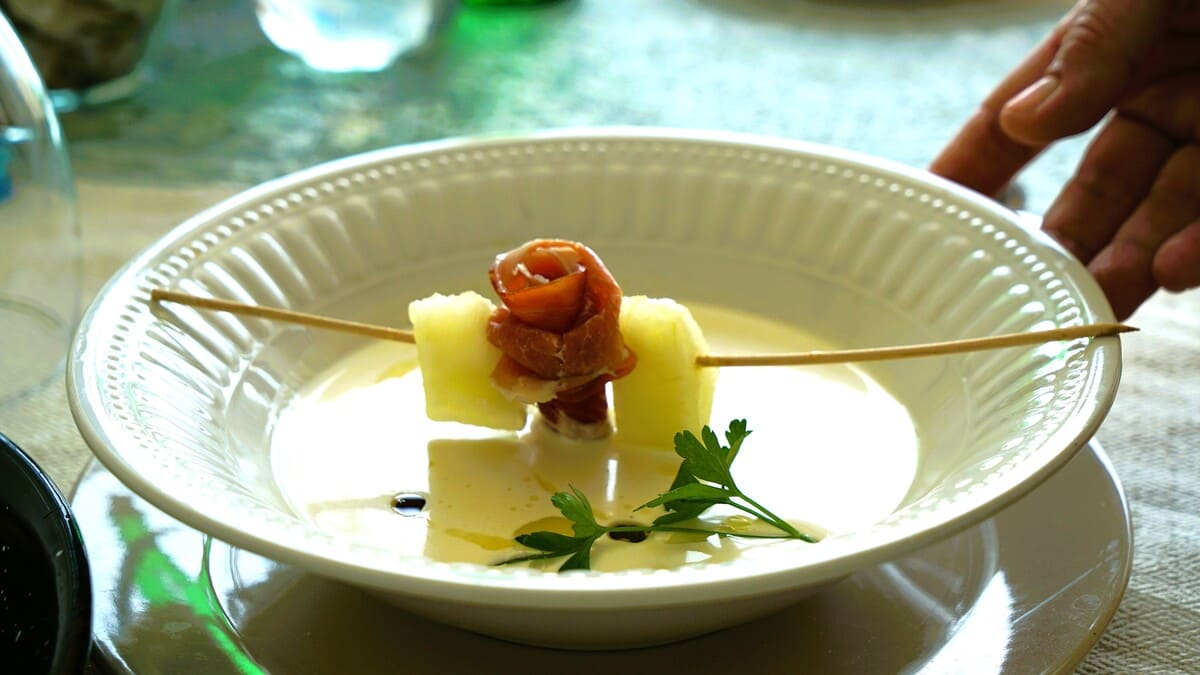
We invite you to discover local cuisine the way it’s meant to be: in private homes, with real people and traditional recipes you won’t find in restaurants.
Book a culinary experience with us and take home a delicious, 100% Andalusian memory.
Because after the road… it’s time to sit at the table.

